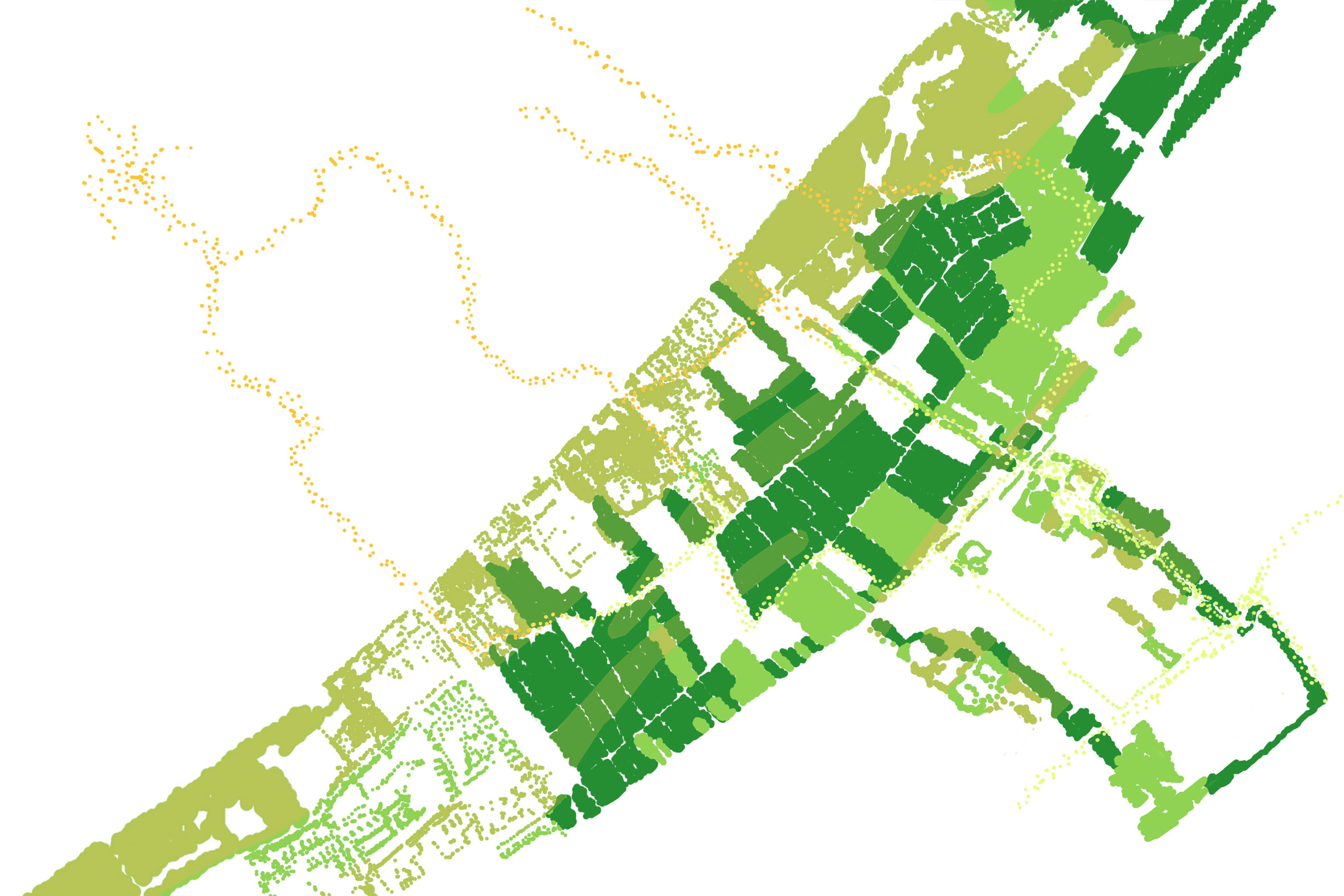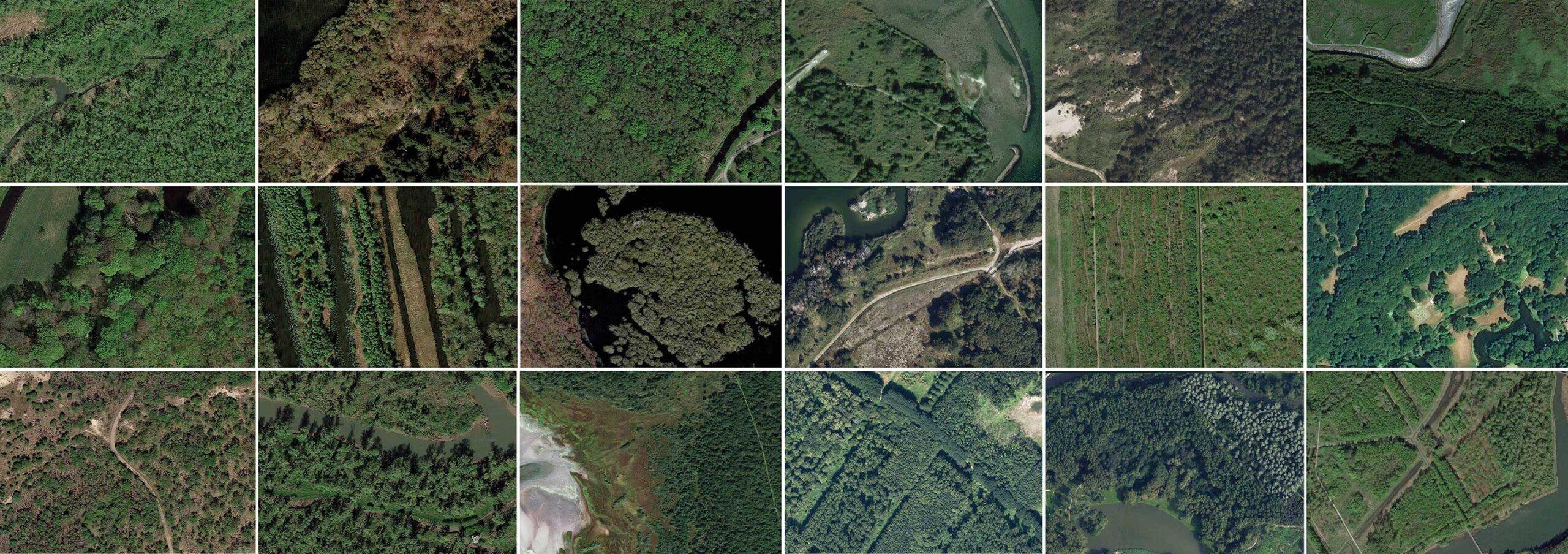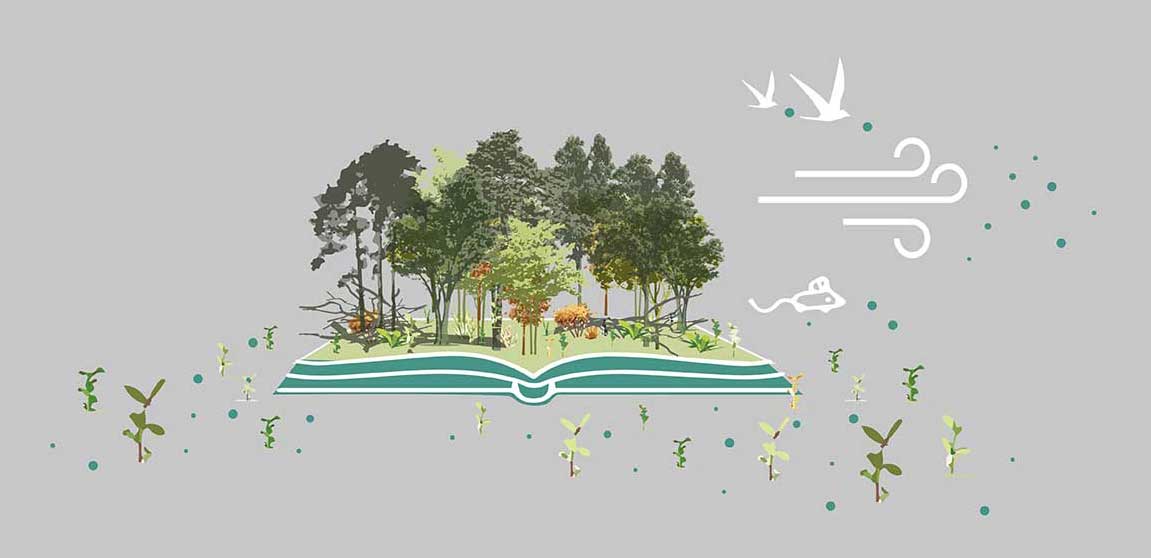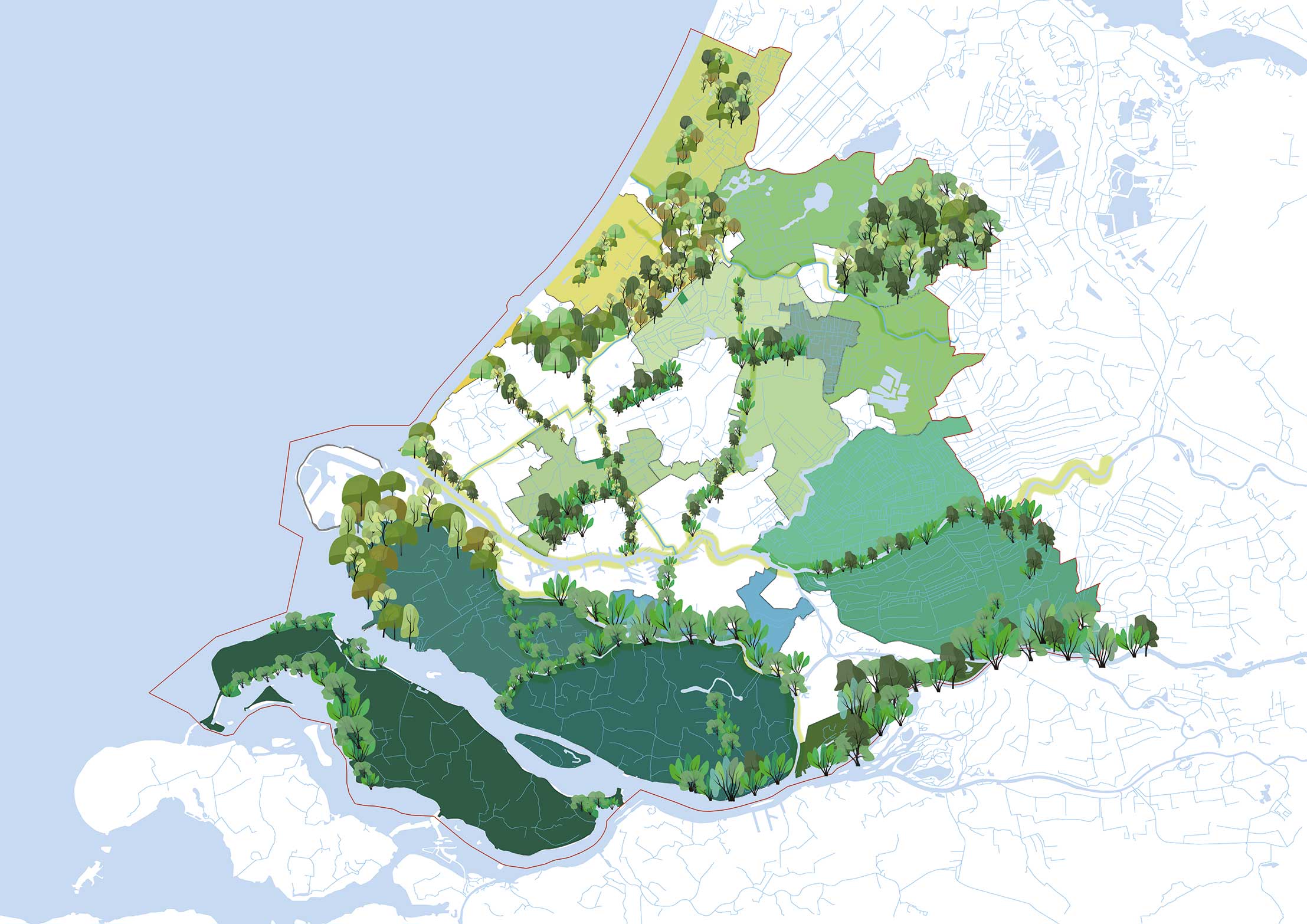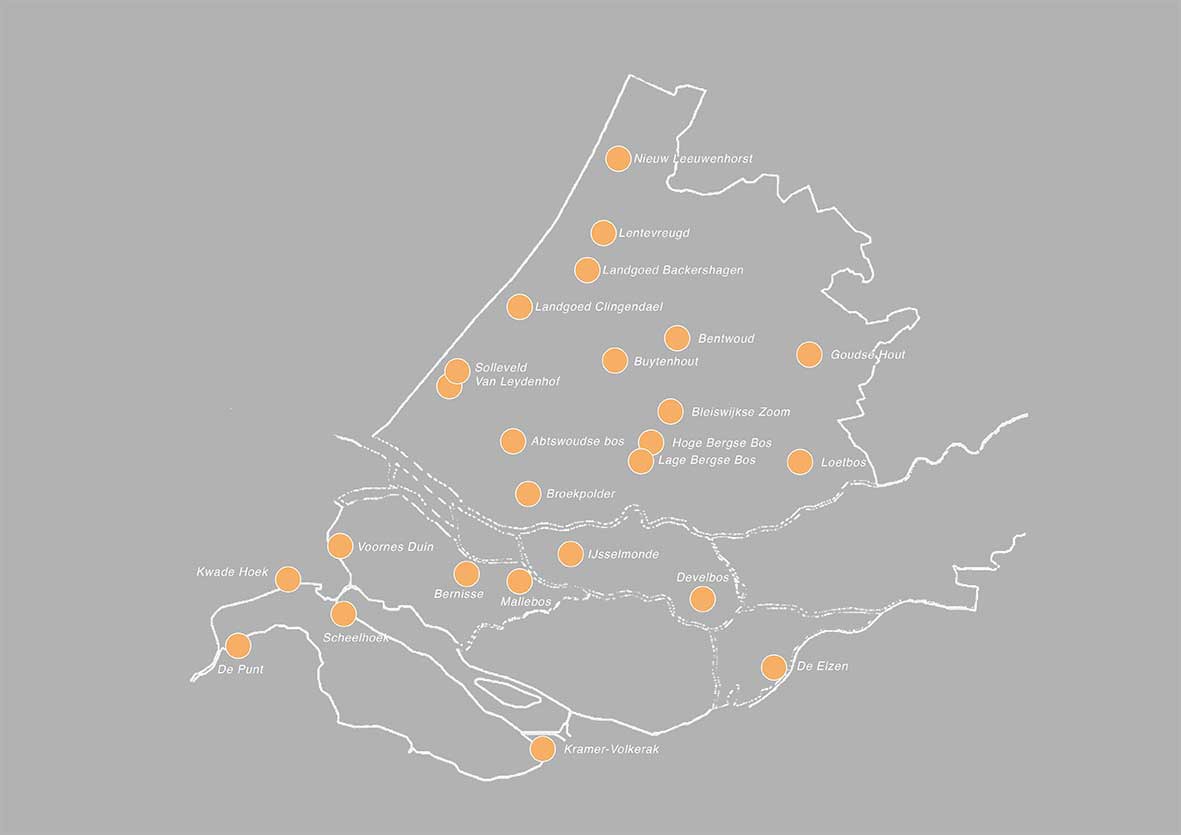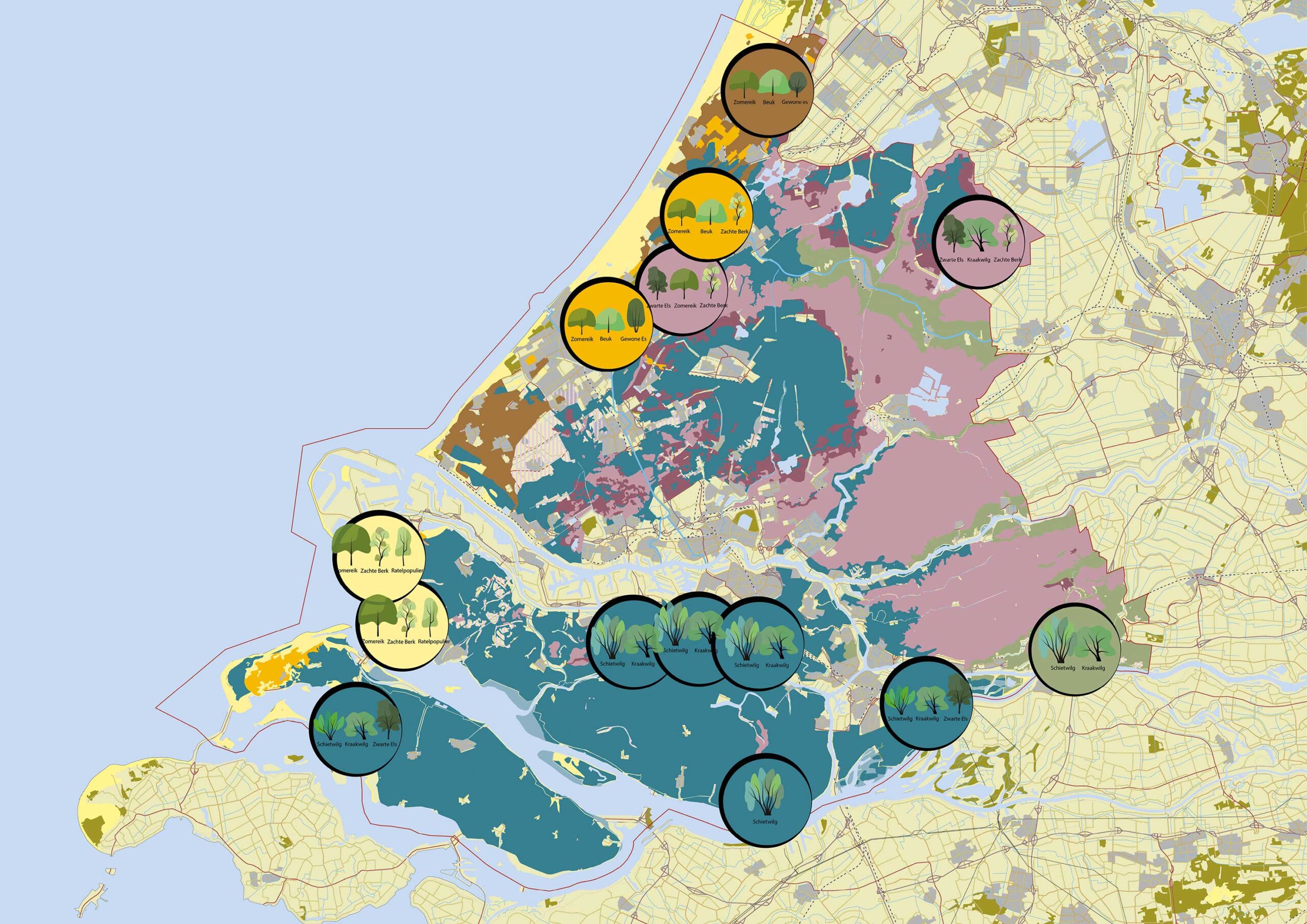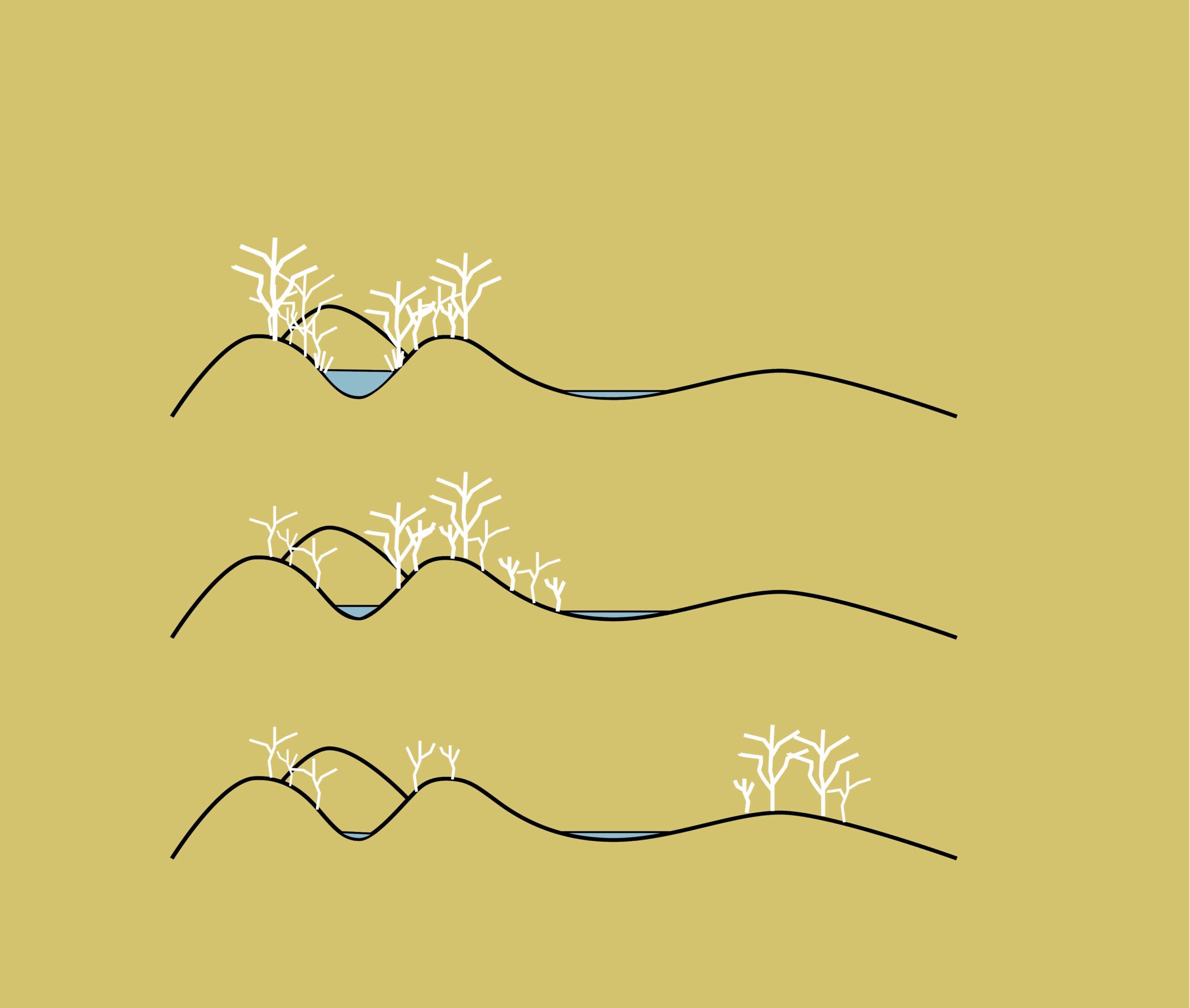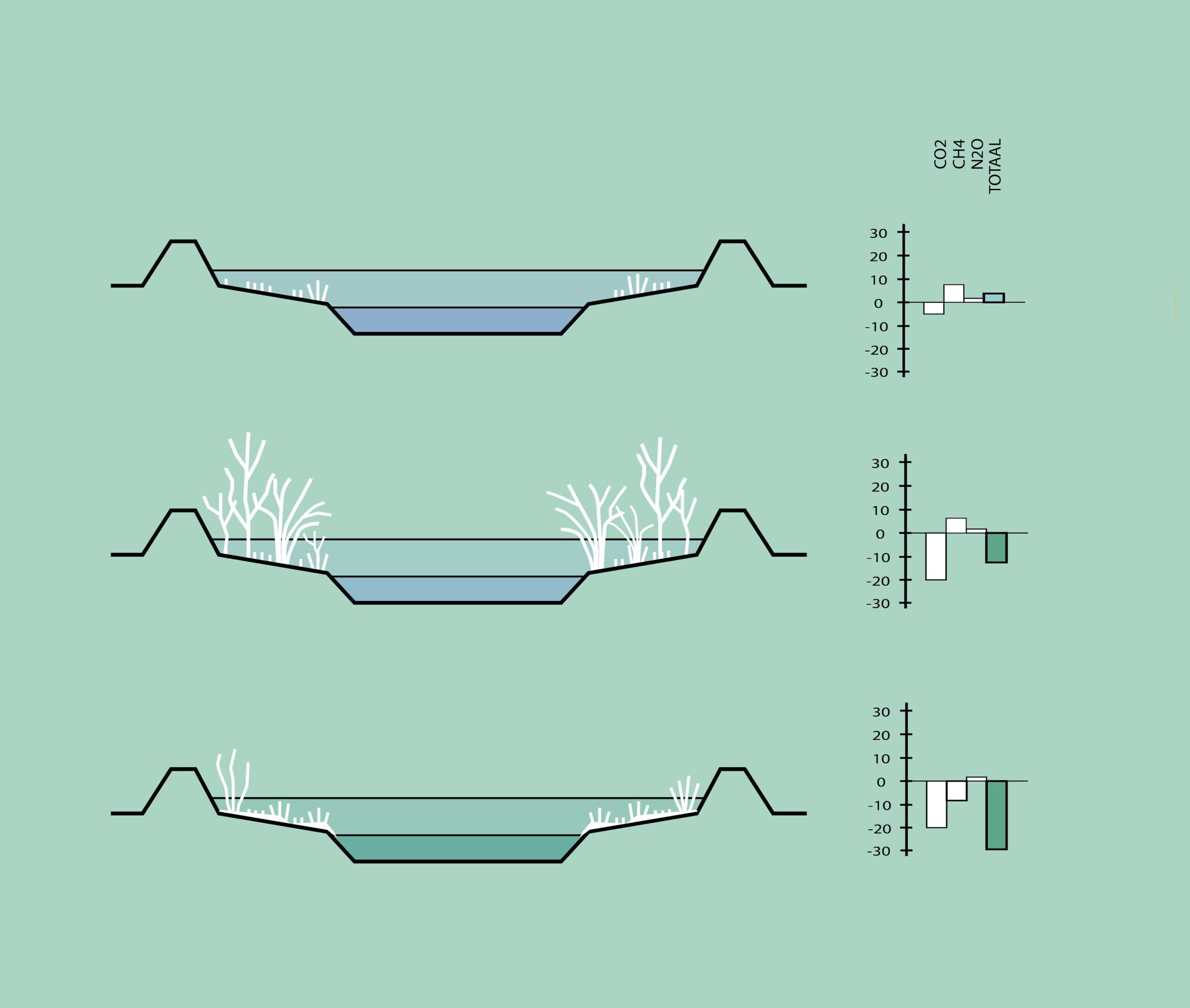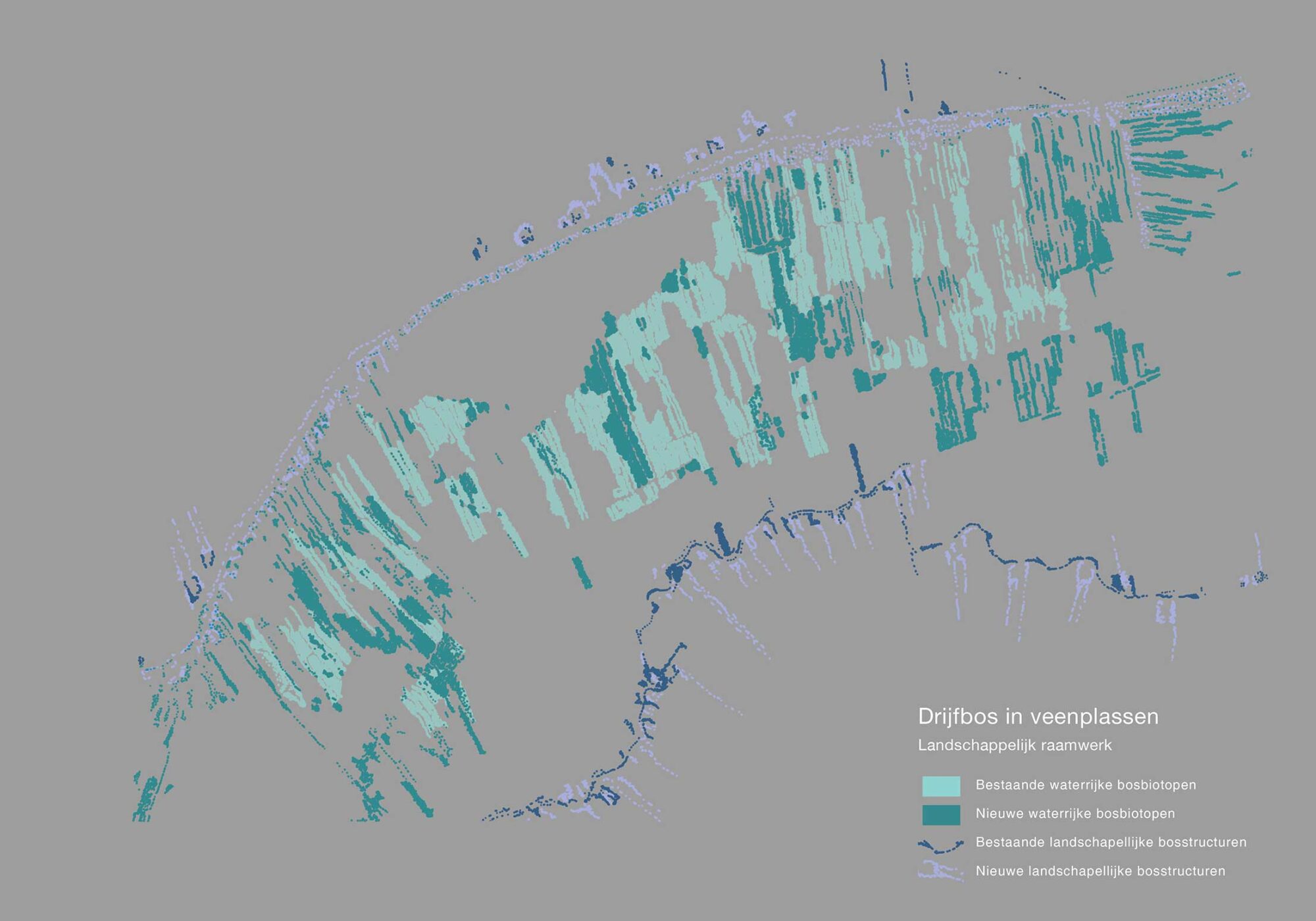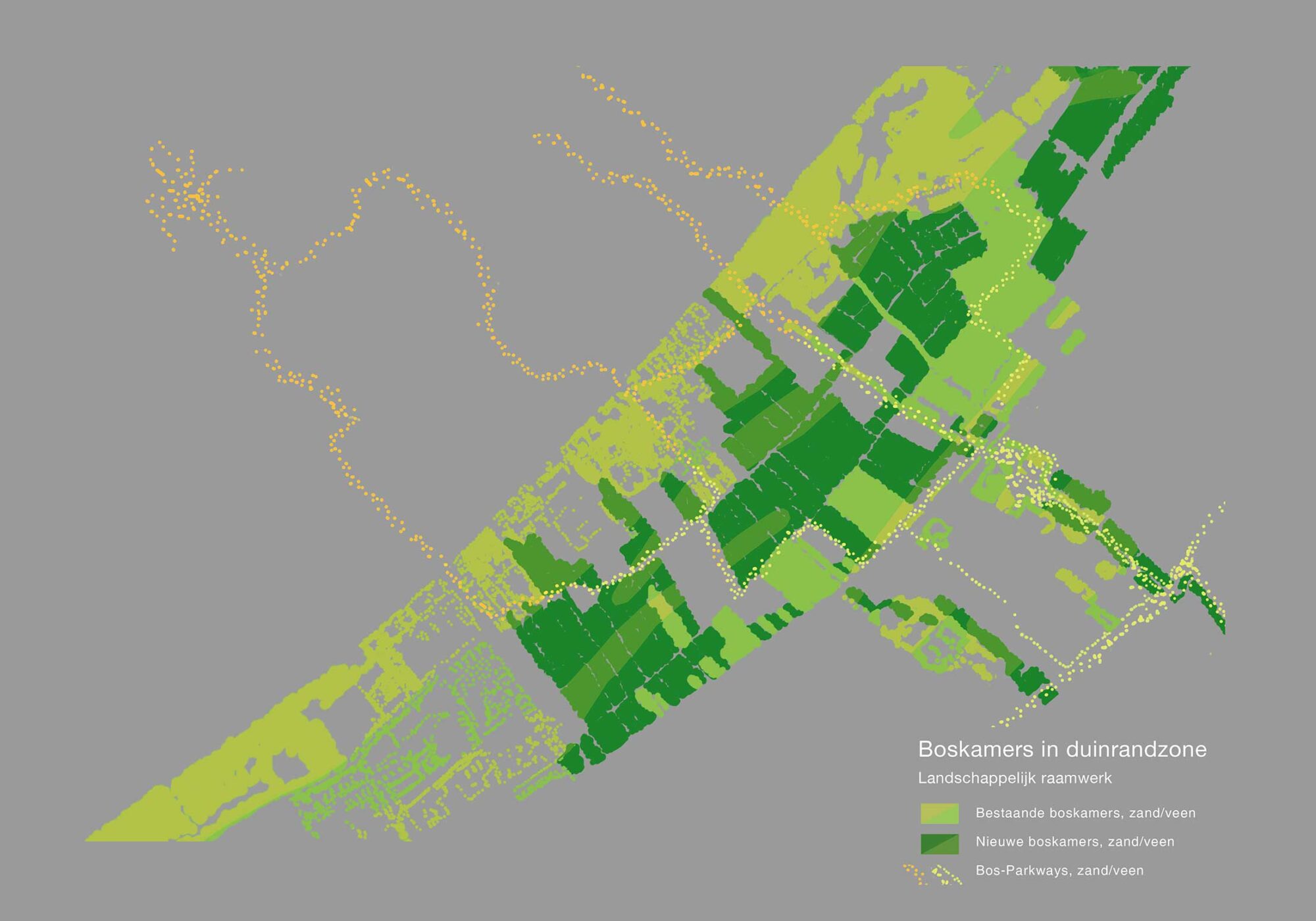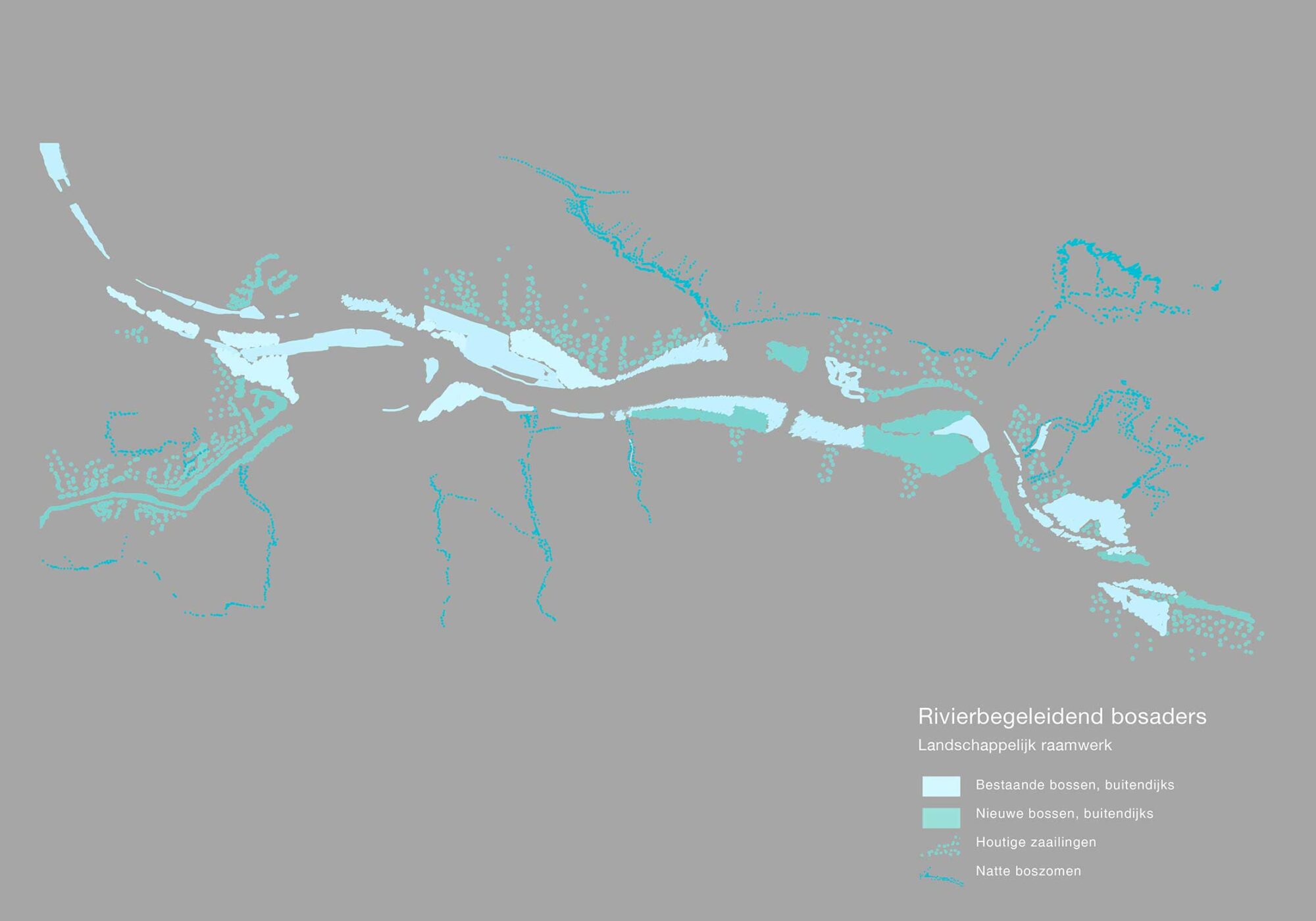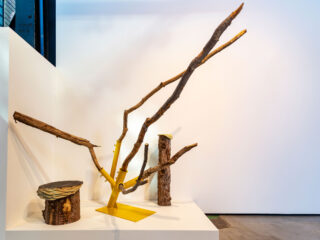Forests of the future
In the national forest strategy guidelines are formulated on how we can realize more forests for the future. But in the process from instruction to reality a gap reveals itself. A lot of newly planted forests consists out of a limited number of species, are planted in small units, in harsh soil conditions and in suboptimal water conditions. Because of this a lot of new forests have to start off with limited possibilities to develop into a healthy ecosystem. The CO2 reduction goals though are met.
Seedlings as forests to be
Thriving Forests shows a strategy on how the Province of South Holland can realize her ambition on 1000 hectares of new forest. This study introduces a sowing strategy instead of planting plan. With help from the wind, birds or mammals, young seedlings can be widely dispersed. In this way new, biodiverse forest can develop themselves. We – humans- can help in creating suitable circumstances.
From forest patches to wilderness pockets
The local soil conditions and existing forest patches in South Holland form the basis. These patches expand into a network of ‘wilderness pockets’. Also, forest lovers can invite Thriving Forests on desired spots by a composting plan. In this way a holistic, mystical forest will come to be, that responds to climate driven landscape transitions, that increases biodiversity, that creates a green network, that connects with future generations and that stores carbon dioxide.
Trees and subsoil
A forest starts with the subsoil. For any spontaneous vegetation to grow, the relation between the quality of soil, water and light plays a big role. In the South Holland there are three main types of soil. Peat, sand and clay. On each type of soil a different coherence of trees is dominant.
For each of these soil types there are specific challenges, related to climate change. In the peatlands the water level will be raised, to stop soil subsidence and reduce CO2 emissions. In the dunes periods of drought are increasing, which makes it hard for many species to survive. In rivers and waterways the water quality becomes more saline which affects the occurring species.
When we think of forests of the future these landscape transitions should set course for which species we help them dispersing themselves. This should be the species are likely to adapt to the new conditions and together will have a positive effect on the ecosystem.
Three types of new forest
By zooming in on three locations a vista on future forests is created. First is an example of the moorlands were new, mobile forests can disperse on floating mattresses of willow branches. Second is an example of the dunes. were by transplanting little pieces of forest towards the edge of the soggy polder, an enlargement of the existing ‘forest rooms’ can be created. Third is an example of the floodplains were along with rising tides sweet water forests will turn into saline marshlands that even store CO2 faster.
A different perspective
The aim of the study isn’t defined by a practical plan to transform land into forests, but it is defined by a different view on what forest can and should be; a holistic ecosystem with a balanced symbiosis between humans, nature, space and time.


